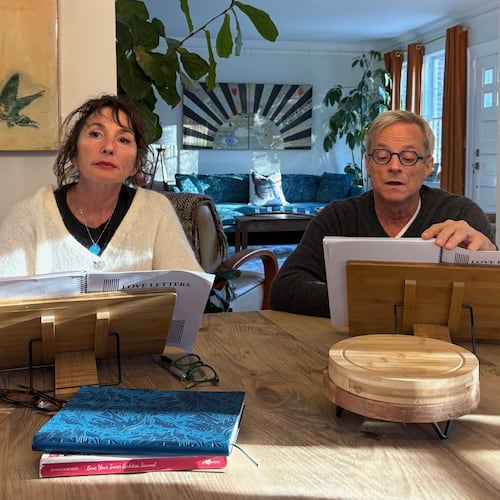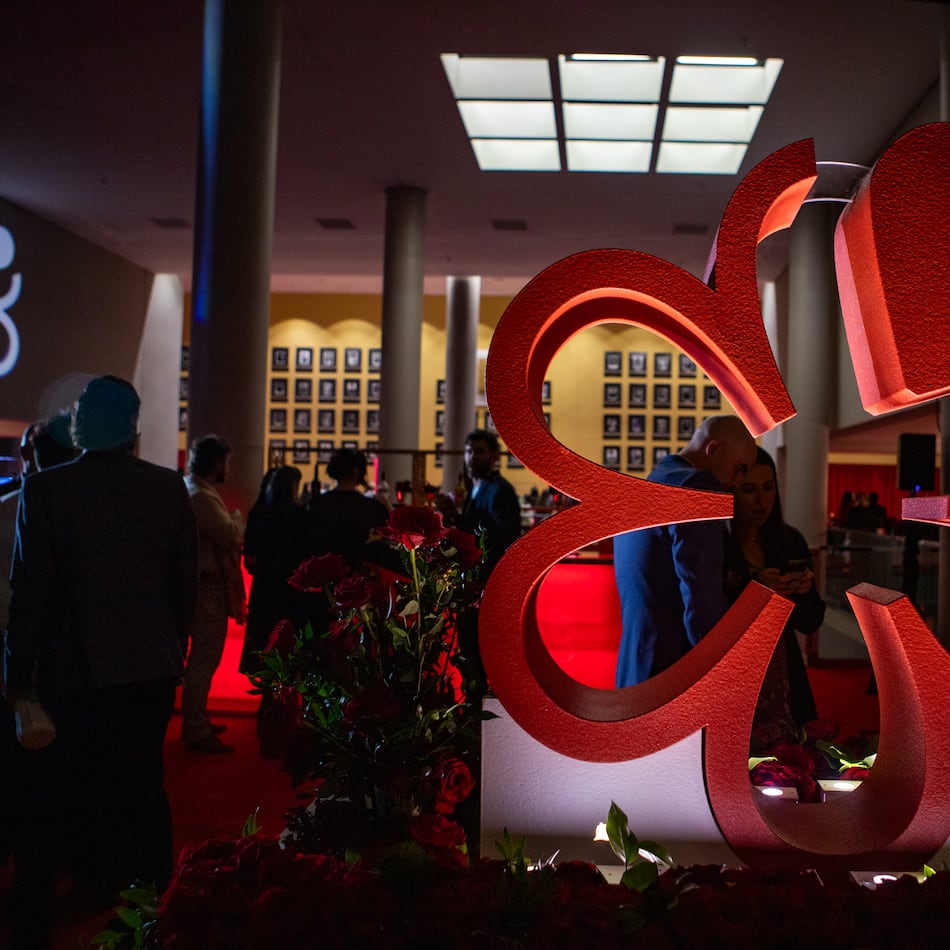This story was originally published by ArtsATL.
At the end of a run-through of Sergio Masero’s “Querencia” in the Atlanta Ballet studios, several of the male dancers moved to the sides and performed a series of tricep pushups. Their muscles were already exhausted, but working past that exhaustion builds stamina. In the next run-through, Masero says, the dancers can bring just a bit more to the new work.
As Masero explained to ArtsATL, he trusts the Atlanta Ballet dancers who will be performing “Querencia” in next weekend’s mixed-bill program, “Kaleidoscope,” to know their bodies. He encourages them to keep up their exertions for just a bit longer after running the piece so that, in performance, they can end “Querencia” feeling like they have strength in reserve.
“Because they will never feel as tired on stage as they did after the pushups, the dancers can experience the piece with more joy,” he said. “They don’t have to worry about whether they can make it through; they know.”
Credit: Courtesy of Atlanta Ballet
Credit: Courtesy of Atlanta Ballet
Masero’s advice comes from experience. When he was rehearsing the challenging bluebird variation from “Sleeping Beauty” for an international ballet competition, his coach would make him run his solo twice through. Knowing he could dance it twice when he only had perform it once in competition gave him the boost of confidence he needed to win.
Masero knows the dancers in his work have what it takes because he dances alongside them as an active member of the company. He will perform in Mark Morris’ “Sandpaper Ballet” on the March 22-24 mixed bill.
Gennadi Nedvigin, Atlanta Ballet’s artistic director, said one advantage of cultivating choreographic talent from within the company is that Masero, like choreographer-in-residence Claudia Schreier, begins the process of creating a new work already familiar with the company and its strengths.
“Choreographers who have danced with the company, or resident choreographers, know the dancers better. They can push them in specific ways, and they know how to get the most from each dancer,” Nedvigin said.
In addition to building a repertoire that challenges and engages the company’s dancers, Nedvigin said giving dancers a chance to choreograph helps train the next generation of leaders. “To be a choreographer, you have to become a different person because you’re in a different role. It requires bravery and a certain confidence,” he said.
Nedvigin said it is never too early or too late for a dancer to think about choreographing or working as a company rehearsal director or répétiteur. Providing those opportunities is essential to attract dancers to the company, he said, and such skills are fostered in the Atlanta Ballet 2 program. Nedvigin says this gives dancers a broader perspective, helping them to understand better the company’s rhythm of the day and appreciate everyone behind the scenes.
“Querencia” is Masero’s third piece for the company. In rehearsal, it was already shaping up to be a beautiful — and wickedly difficult — neoclassical ballet, a challenge for the dancers as well as a testament to Masero’s confidence in their talents.
Nedvigin was expecting a work for a principal couple and a corps de ballet of eight dancers. After the first full run through, when he saw the complexity of the choreography, especially the intricately timed lifts and partnering performed by all 10 dancers, he told Masero that he has, in fact, created a piece for five principal couples.
Masero set “Querencia” to a score by Anton Arensky. A trio for violin, piano and cello, it will be played live during the performances. The title of the ballet, Masero said, refers to a place or context in which one feels emotionally strong. In the piece, he wanted to explore the contradiction of how a score that resonates in its third movement with so much sadness could bring such joy to the listener.
On the surface — in its lines, movement vocabulary and costumes — “Querencia” glitters with the aesthetics of traditional ballet. But Masero said that, as a choreographer, he seeks to animate ballet with what he and the dancers have learned from doing more contemporary work. In “Querencia,” Masero’s innovation is apparent in the dance’s connective tissue — the way they get from one pose to the next, share their weight in supported adagio, move with more fluidity and just take up more space on stage.
“I want to show that ballet isn’t like some machine where we’ve used up all of its potential so it has to be replaced,” Masero said. “Ballet still has someplace to evolve.”
Credit: Kim Kenney
Credit: Kim Kenney
Nedvigin said Masero’s aesthetic vision complements his goals for “Kaleidoscope” as a program. Along with “Querencia,” the bill will include another world premiere, “Corridors,” from freelance choreographer Garrett Smith, and Morris’ “Sandpaper Ballet” from 1999. Now considered a classic, “Sandpaper Ballet” represents the neoclassical tradition to which the two newer works are responding.
“I wanted to show that this is all happening in ballet right now,” Nedvigin explained. Companies are re-staging canonical work and commissioning emerging choreographers who use that canon as a jumping off point and end up in completely different but still exciting and unexplored artistic territory.
The “Kaleidoscope” program seems almost like a précis of Nedvigin’s medium — to long-term plan for growing Atlanta Ballet and its influence. When ArtsATL was in the Atlanta Ballet studios, the halls were bustling with preparations for three shows: the just-completed run of “Cinderella,” featuring Atlanta Ballet 2; “Kaleidoscope”; and ”Liquid Motion,” the mixed bill that will close the season in May. That ability to multitask is a sign of the company’s artistic strength and its emerging organizational maturity.
DANCE PREVIEW
Atlanta Ballet presents “Kaleidoscope”
8 p.m. March 22, 2 and 8 p.m. March 23, 2 p.m. March 24. Cobb Energy Performing Arts Centre, 2800 Cobb Galleria Parkway, Atlanta. $26-$149. 404-892-3303, atlantaballet.com
::
Robin Wharton studied dance at the School of American Ballet and the Pacific Northwest Ballet School. As an undergraduate at Tulane University in New Orleans, she was a member of the Newcomb Dance Company. In addition to a bachelor of arts in English from Tulane, Robin holds a law degree and a Ph.D. in English, both from the University of Georgia.
Credit: ArtsATL
Credit: ArtsATL
MEET OUR PARTNER
ArtsATL (www.artsatl.org), is a nonprofit organization that plays a critical role in educating and informing audiences about metro Atlanta’s arts and culture. Founded in 2009, ArtsATL’s goal is to help build a sustainable arts community contributing to the economic and cultural health of the city.If you have any questions about this partnership or others, please contact Senior Manager of Partnerships Nicole Williams at nicole.williams@ajc.com.
About the Author
Keep Reading
The Latest
Featured






